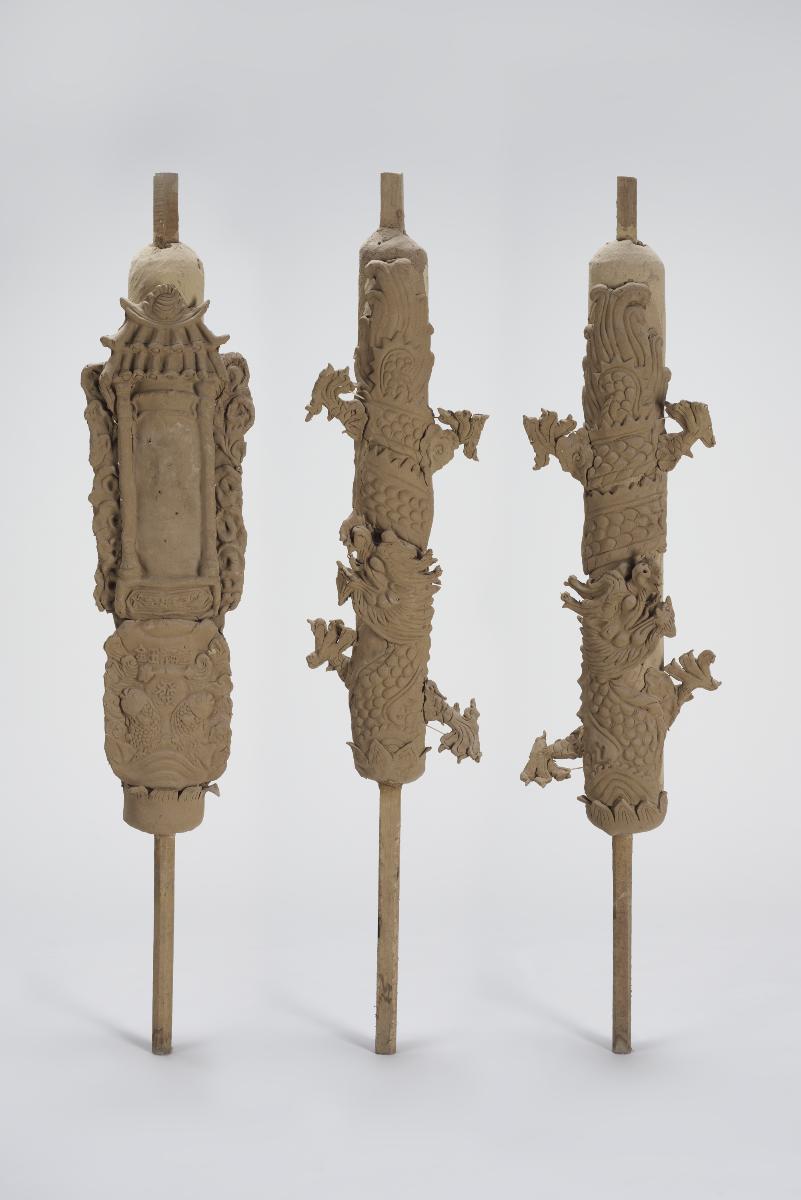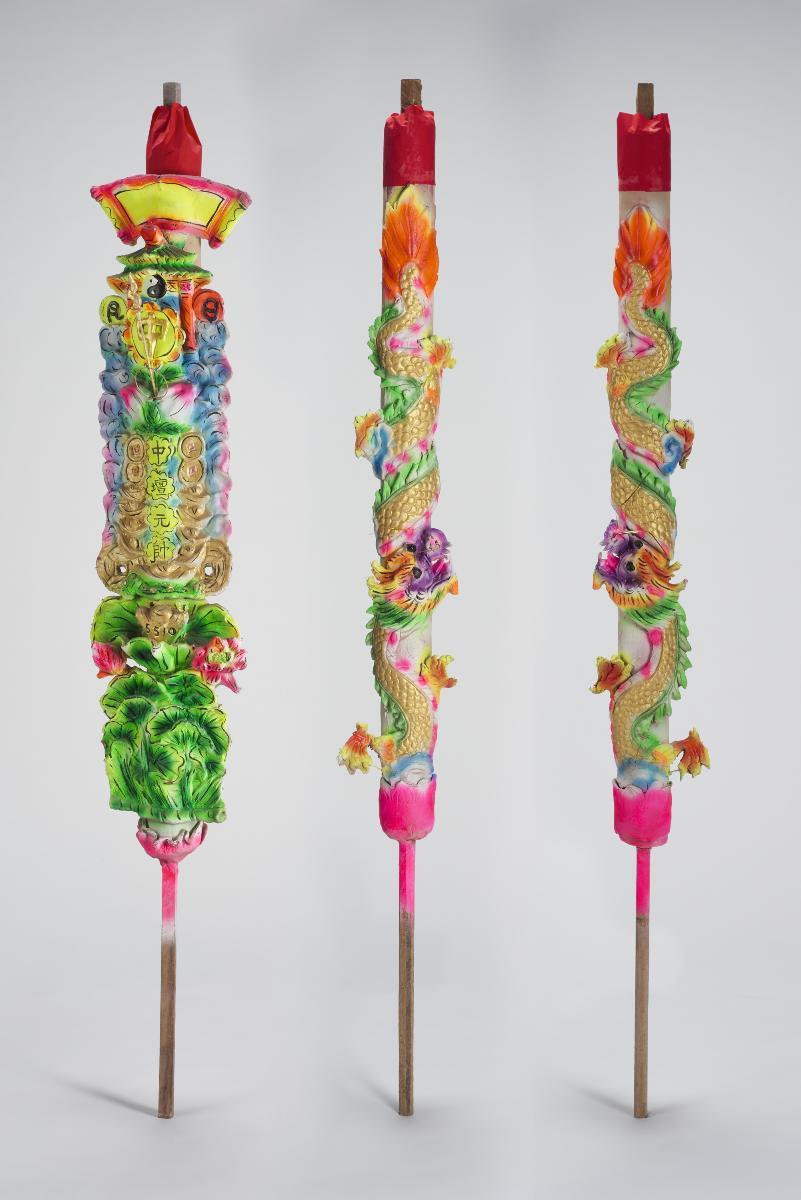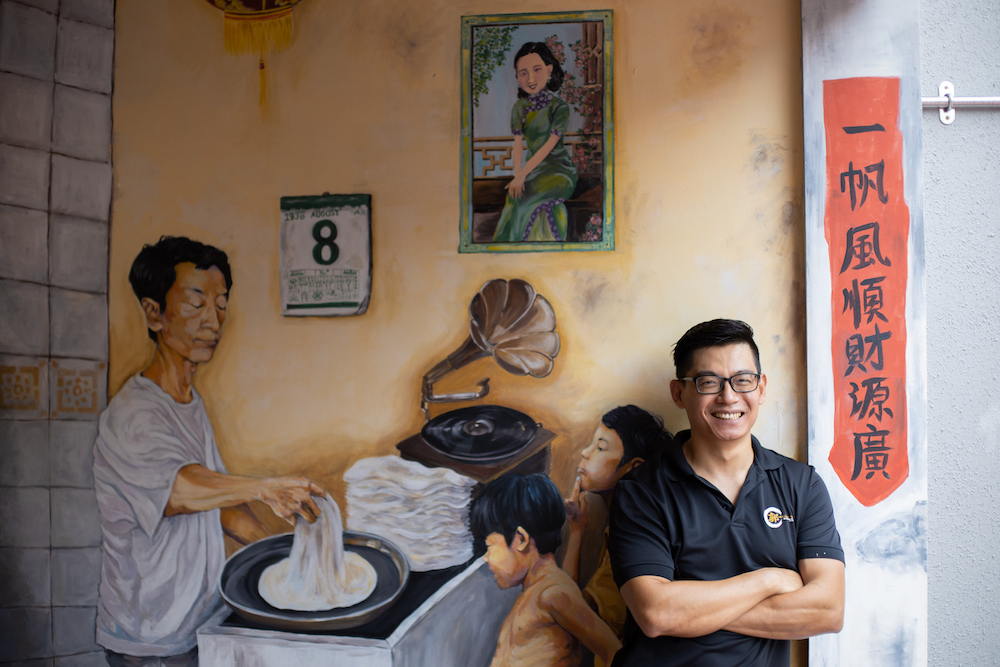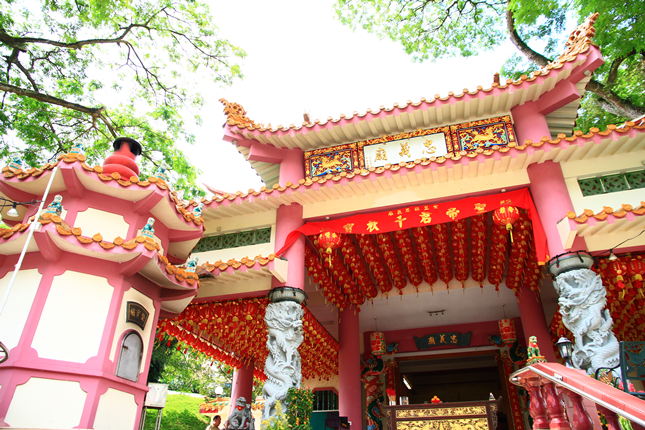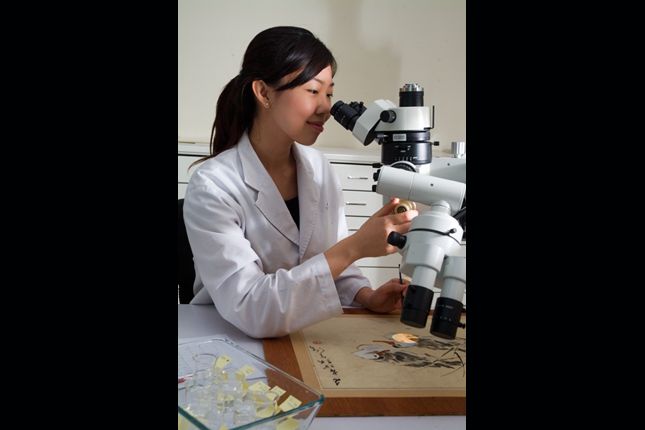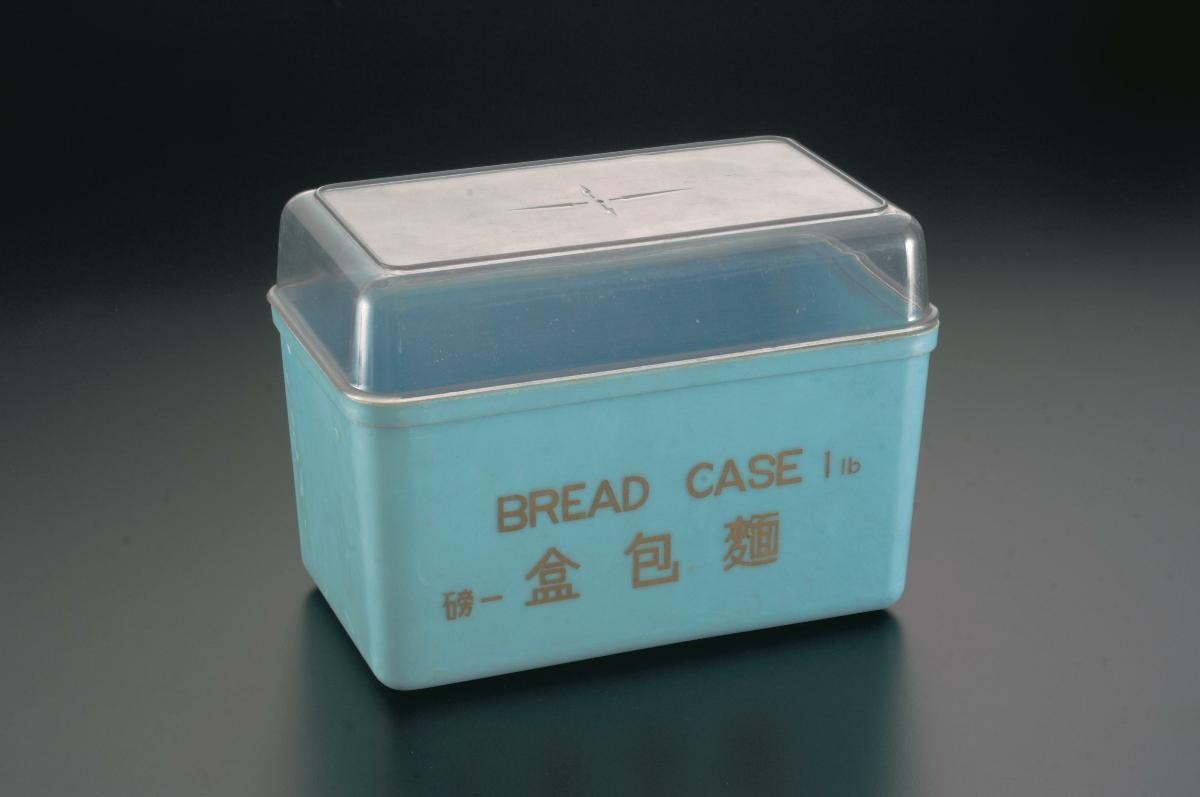Making of Joss Sticks
Joss sticks are fundamental to Chinese rituals and festivals, and often burned as part of rituals conducted during Chinese New Year (including the eve of Chinese New Year), deities’ birthdays, and for religious purposes.
Joss sticks come in different shapes, sizes and fragrances. There are perfumed joss sticks (香水香xiang shui xiang), large dragon joss sticks (龙香 long xiang) and small joss sticks (小香xiao xiang).
Joss sticks are made from a mixture of joss wood dust, which can come from natural materials such as wild cinnamon tree. Large joss sticks are usually made from joss wood dust that are mixed with water, creating a dough which is rolled out and layered on a wooden stick. These can range in height from 3 to 12 feet (about 1 metre to 3.8 metres). They may be adorned with carvings such as dragon and phoenix motifs. Small joss sticks are usually made from bamboo sticks that are dipped in water and rolled in joss wood dust, and are about 28cm in length. The 28cm-long small joss sticks are more popular nowadays due to urbanisation as many people now live in HDB flats. Small joss sticks burn less and the ash they leave is easier to clean up. The regulations aimed at minimising smoke pollution- including restrictions on the height and cross section of joss sticks and the numbers that can be burnt at any one time, accompanied by the shifting religious landscape in Singapore, has resulted in a decline in the number of joss stick making stores.
Geographical Location
The making of joss sticks can be traced back as early as 586-538 BC to the religious practices of the Egyptians, Babylonians, ancient Greeks and Romans.
In Asia, large dragon joss sticks are made in places such as China, Malaysia and Vietnam. As part of various religious practices in Asia, joss sticks are burned as offerings to various deities. The practice became more widespread in Singapore with early Chinese migration in the 19th century. As a result, large quantities of joss sticks were imported.
Later, local joss stick making businesses catering to the demands of practitioners sprung up. Some businesses specialised in making either large or small joss sticks, while others did both.
Communities Involved
Chinese in Singapore who observe Chinese rituals and festivals, including the Taoist community, are involved in the use of joss sticks. Apart from individual worshippers, temples, clan associations and shop owners also use them. These groups may order large joss sticks with customised carvings like dragons, phoenixes or deities.
Associated Social and Cultural Practices
Joss sticks are usually burnt as part of rituals conducted during the 7th, 8th and 9th lunar months, the 4th day after Chinese New Year (the day when deities who have gone to Heaven to celebrate the New Year return to earth), and the birthdays of various heavenly deities.
In the case of large joss sticks, the base ingredient joss dough is created by adding water to joss wood dust, rolling it out and layering it on wooden sticks. Each layer is left to dry for around 2 weeks before a new layer is added. Each joss stick consists of up to 4 layers of joss dough. Carvings are added after the dough has dried. The carver uses a knife, an ice cream stick and a rolling pin to carve each design, which can take between half an hour to 10 hours. At times, a wooden mould may also be used to create the design. Lastly, the joss stick is covered with a layer of clear polyurethane for protection. Common designs found on large joss sticks are dragon and phoenix motifs, as well as divinities.
An example of a shop that makes mainly large joss sticks is Tay Guan Heng, run by Mr Albert Tay and his brothers. Besides producing joss sticks for religious ceremonies and rituals, Tay Guan Heng has also innovated the use of joss dough to make figurines. The figurines are made using twisted metal wires, newspaper and joss stick dough and attached to the joss sticks. The handmade figurines set Singapore-made joss sticks apart from those from China, which tend to be plain with phrases such as “peace in the home” (he jia ping an 合家平安) and “prosperous business” (sheng yi xing long 生意兴隆) printed on them. If there are any figurines attached, they are also basic and less artistic.
Experience of a Practitioner
Tay Guan Heng shop is a family-run business specialising in making of large joss sticks since the 1930s. The Tay Brothers have been helping out at the shop from a tender age, assisting their father to craft figurines to be attached to the joss sticks. Out of the 15 joss stick making stores that existed in Singapore up to the 1990s, five or six were owned by disciples of Mr Albert Tay’s father. Mr Tay has managed to keep Tay Guan Heng in business by supplementing his regular orders from temples and clan associations with customised figurines for foreign tourists. These figurines are sold as individual pieces and include characters and scenes from the Bible.
Mr Tay also tries to raise awareness about the craft by giving interviews on his trade and allowing his products to be exhibited in cultural festivals and exhibitions. He has participated in NHB’s Heritage Festival and in 2014, he collaborated with Pop-Up Singapore House and designed 3 joss sticks that were exhibited in the London Cultural Olympiad. He continues to look for ways to teach the craft to young people.
Present Status
Joss stick making in Singapore faces many challenges. The implementation of Environmental Public Health (Burning of Joss Sticks and Candles) regulations in 1998 affected many makers of large joss sticks because their products exceeded the restrictions on the maximum height and dimension of joss sticks that could be burned.
Moreover, joss stick making is a seasonal trade and the working environment is tough. It takes a long time to learn how to make joss sticks properly. Thus, not many young people are interested in entering the trade. Within Mr Tay’s family, there is no one interested in taking over the business, and Mr Tay has had difficulty getting the appropriate certification so that he can teach joss stick making in schools.
Lastly, the decline in demand for joss sticks can be attributed to a shift in the religious landscape in Singapore. There is a declining number of people who subscribe to rituals that involve joss sticks, which adversely affects demand for joss sticks. However, Mr Tay notes that many foreign tourists like collecting joss stick figurines as souvenirs.
Tay Guan Heng - believed to be the last maker of giant joss sticks in Singapore - ceased operations on 4 December 2022.
References
Reference No.: ICH-082
Date of Inclusion: October 2019
References
Sullivan, Margaret, Wong, Henry and Neo, Michael. Can survive la: Cottage industries in high-rise Singapore. Singapore: G. Brash, 1985.
Siripanich, S., Siriwong W., Keawrueang, P., Borjan, M., and Robson, M. “Incense and Joss Stick Making in Small Household Factories, Thailand”, International Journal of Occupational Medicine and Environmental Health, 5(3): 137-145, 2014.
Yeo, Jesvin. Vanishing Materials. Singapore: National Library Board, 2015.
Yen, Ching Hwang. Ethnic Chinese Business in Asia: History, Culture and Chinese Enterprise. Singapore: World Scientific, 2014.




.ashx)


.ashx)
